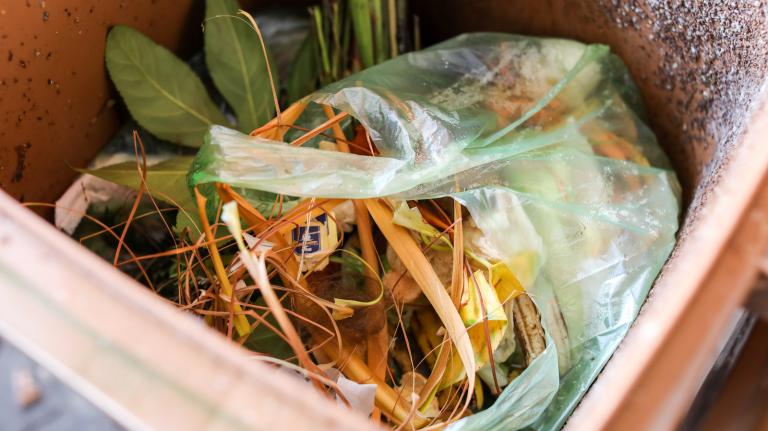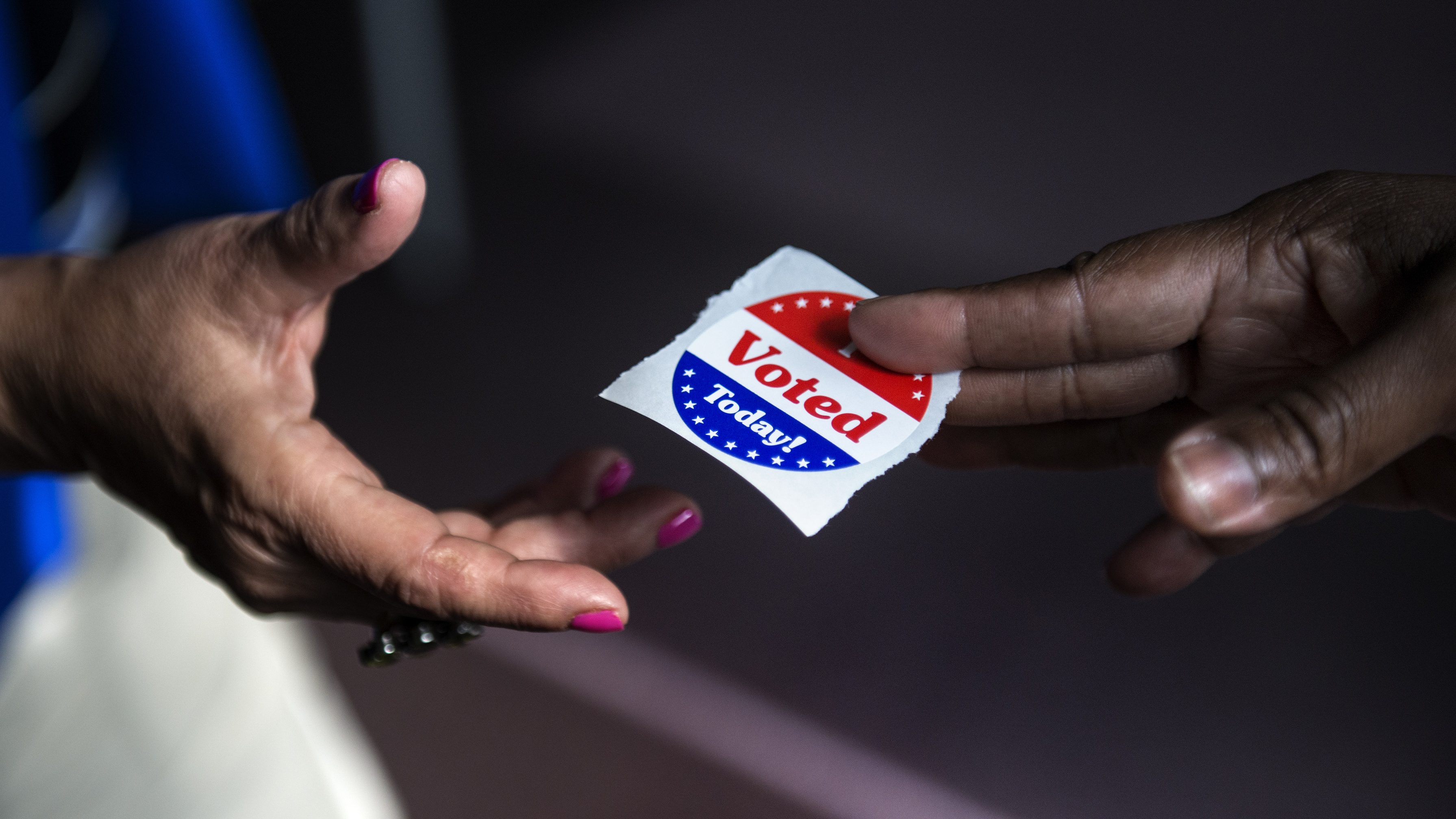The United States midterm elections will take place on Tuesday. Polls, those imperfect barometers of public opinion, show Democrats and Republicans in a dead heat for control of the Senate. Republicans need to pick up just five seats to take back majority power in the House of Representatives and are favored to win that chamber.
The prospect of new climate policies getting passed in this country largely depends on what happens on Tuesday. If Democrats retain control of Congress, they could pass, or at least try to pass, measures to reduce greenhouse gas emissions or address the impacts of rising temperatures. There’s a growing appetite among Democratic lawmakers for climate action, as evidenced by their recent landmark climate bill, the Inflation Reduction Act of 2022. If Republicans emerge victorious, the odds of Congress enacting new climate policy are much, much lower, as evidenced by the lack of a single Republican vote for the aforementioned landmark climate bill. Despite vague murmurs in support of free-market climate policies coming from far-flung corners of the GOP in recent years, the party has never produced a comprehensive emissions plan that’s in line with what experts say is necessary to preserve a livable planet.
From a climate perspective, there’s a lot at stake — and not just in Congress. Climate advocates are up for election at the state and local levels, too. With new federal funds earmarked for climate initiatives headed to states, tribes, utilities, and consumers thanks to the $1 trillion infrastructure legislation that passed in 2021 and the Inflation Reduction Act, those races could shape the next couple of years of climate policy in communities around the country.
“If we are going to keep making the progress we know we need, we must continue to elect leaders at every level of government who will put climate action at the top of their agenda,” Pete Maysmith, senior vice president of campaigns at the League of Conservation Voters, said. Here are six of the races across the country that could wind up playing a consequential role in the country’s response to climate change over the next few years.
Luke Warford vs. Wayne Christian, Texas Railroad Commission
Because the Texas Railroad Commission oversees the sprawling oil and gas industry in the Lone Star State (but not, ironically, railroads), the powerful three-member agency plays an outsize role in Texas’ emissions footprint. Luke Warford, a 33-year-old who used to work for the Texas Democratic Party, is trying to capitalize on outrage over last year’s deadly winter power outages to unseat his opponent, Republican incumbent commission chair Wayne Christian. Warford has been traveling across Texas by train educating voters about the effect extreme weather will have on the power grid in coming years. He’s said that his race is “the most important climate race in the country.”
It’ll be a tough fight. A Democrat hasn’t won a statewide office seat in Texas in 28 years. The Railroad Commission has been all-Republican for nearly as long. Christian, the Republican incumbent who has served on the commission since 2016, said Warford is running on a platform that will “put our local oil and gas companies out of business and kill jobs.” But Warford isn’t shying away from messaging around the climate crisis. “In today’s market, there is more demand for low-emissions and renewable energy than ever, and Texas needs to evolve to compete. It’s too important to wait,” he said in a statement.
Catherine Blakespear vs. Matt Gunderson, California 38th state Senate district
Catherine Blakespear, the Democratic current mayor of Encinitas, is making a play for California’s 38th state Senate district. Blakespear’s campaign told the California publication Capital & Main that she is “standing up to Big Oil.” The oil industry, which is taking flak from both sides of the aisle after a devastating oil spill off the coast of Orange County last year, isn’t taking that on the chin.
A political action committee, or PAC, called the Coalition to Restore California’s Middle Class has spent more than $800,000 backing Blakespear’s opponent, Republican Matt Gunderson. The PAC’s top donors are Valero, Chevron, Phillips 66, and the Marathon Petroleum Corporation and its affiliates. The Coalition to Restore California’s Middle Class has also spent nearly a million dollars on opposition research and ad campaigns attacking Blakespear. District 38 has rapidly shifted from Republican to slightly Democratic-leaning in recent years. Blakespear currently holds a narrow lead over Gunderson in the polls, but the race is by no means a done deal. If Gunderson prevails, the oil and gas industry will have successfully wielded its influence over yet another election.
Steve Sisolak vs. Joe Lombardo, Nevada governor
The super-tight gubernatorial race in Nevada is a 2022 test of the strength of a Trump endorsement. Democratic incumbent Steve Sisolak is up against Trump-endorsed Republican Joe Lombardo. Sisolak, who became Nevada’s first Democratic governor in 20 years when he was elected in 2019, signed legislation that will increase the proportion of the state’s electricity generated by renewables to 50 percent by 2030, approved a bill funding electric school buses, and appointed Nevada’s first-ever “climate czar.” Sisolak says he will continue to advance his climate and conservation agenda if reelected next week.
His opponent, Lombardo, does not have a climate plan. On his website, he says he aims to protect Nevada’s water resources and protect residents from wildfires, but doesn’t say how he will do that or mention the role climate change plays in exacerbating drought and wildfires in the state. It’s anyone’s guess who will win the governor’s seat on Tuesday. A recent poll shows Sisolak leading Lombardo by 4 percentage points, within the poll’s margin of error.
Ohio Supreme Court
The elections that will fill three open seats on Ohio’s highest court are among the lowest-profile races in the state, but the way these races shake out could have huge implications for the future of Ohio’s energy policies. The state’s Supreme Court has been dominated by Republicans for decades. Democrats have a chance to regain control this cycle, but all three races will be very close. Ohio energy companies have donated thousands to the Republicans in these three races.
And there is good reason for that. After the election, the winners of these Supreme Court races will help resolve several open questions surrounding clean energy deployment in Ohio. The court is expected to decide cases that could determine whether a permit for a wind farm can be overruled by residents and if the Ohio Power Siting Board should take climate change into account when siting new renewable energy projects.
Monica Tranel vs. Ryan Zinke, U.S. Representative from Montana
You remember Ryan Zinke, the Secretary of the Department of the Interior under former President Donald Trump who resigned from his job because he was the subject of multiple ethics probes? He’s running for Montana’s sole seat in the U.S. House of Representatives, which he previously occupied between 2015 and 2017. The Republican has acknowledged humanity’s role in causing climate change, but that’s about the extent of his climate platform. He called the Inflation Reduction Act a “wish list for the climate change people.”
His Democratic opponent, Monica Tranel, has a different take. She said the bill is “awesome” and has a plan to deal with what her website calls the “climate emergency.” She wants to expand Montana’s clean energy industry and create new jobs in the rapidly-growing state. Tranel spent four years working as an attorney for the Montana’s Public Service Commission, which regulates utilities in the state. She has also represented renewable energy developers in court. Having Tranel in the House would be a big deal for the Democratic caucus, which could use a clean energy expert from Montana in its ranks. Zinke is favored to win, but the race is surprisingly close, in part because of a Libertarian candidate poised to divide the conservative vote in the state.
Mandela Barnes vs. Ron Johnson, U.S. Senator from Wisconsin
In Wisconsin, former businessman and Republican incumbent Senator Ron Johnson is leading Democratic challenger Mandela Barnes — the first Black lieutenant governor of Wisconsin — in recent polls, but not by a lot. And just one of the handful of toss-up Senate races taking place across the country next week could determine which party gets control of the upper chamber. The Barnes vs. Johnson race is a showdown between a clear climate advocate and a climate skeptic.
In an October debate, both candidates were asked about climate change and what they’d like to see done about it. “The climate has always changed,” Johnson, who insists he doesn’t deny the existence of climate change, said. “The question is, can you really do anything about it when China, when India, they’re going to be burning fossil fuels. America’s going to have to burn fossil fuels,” he added.
Barnes, on the other hand, said he wants Wisconsin to be a leader in the transition to clean energy. Barnes is a member of the Wisconsin governor’s Task Force on Climate Change, which has proposed a number of policies since it was established in 2019 and helped create a state Office of Environmental Justice this year. “What we need to do is reduce carbon emissions,” he said in the debate. “What we also need to do is move towards a clean energy economy and make sure Wisconsin is in the driver’s seat.”




